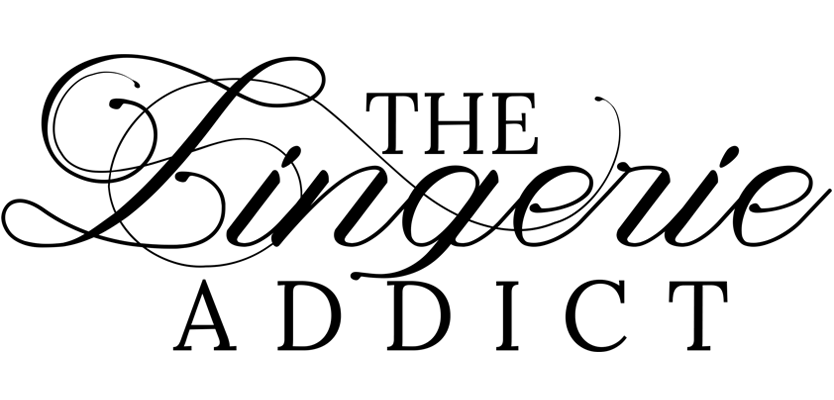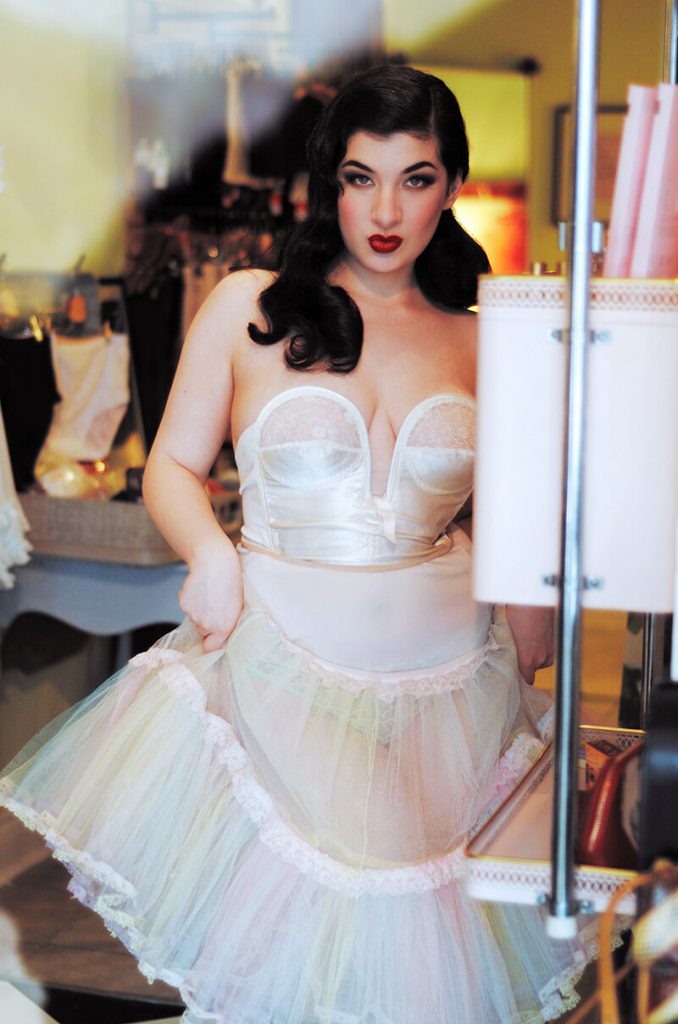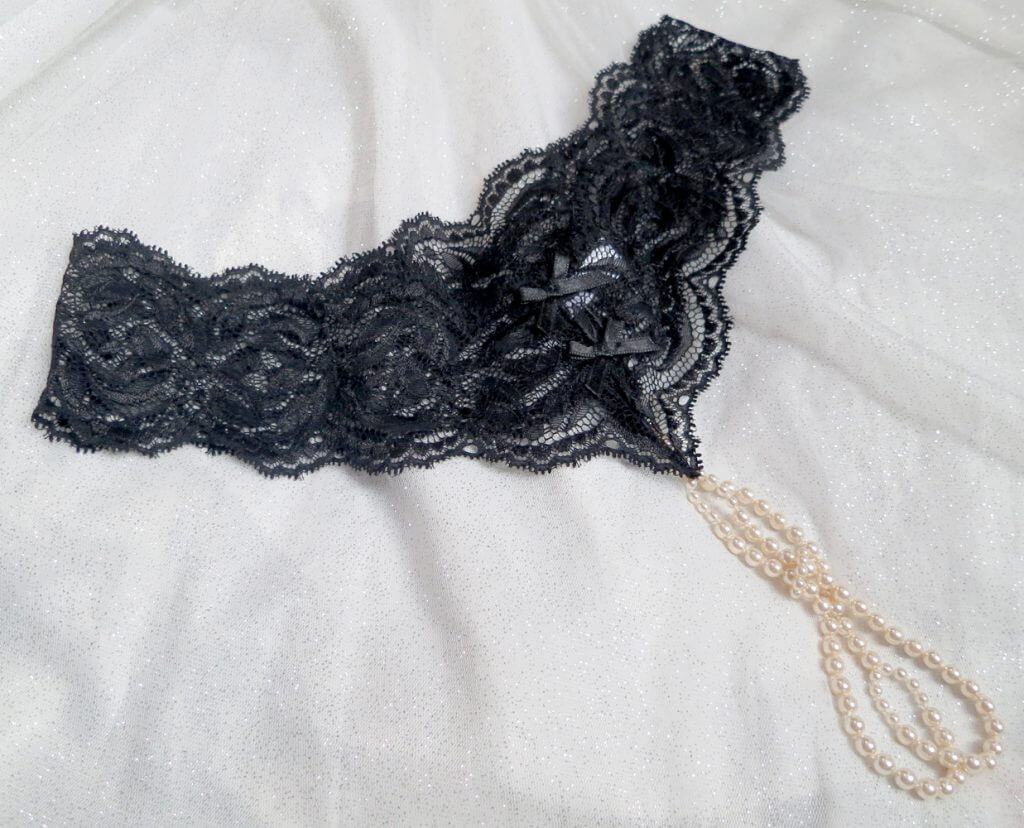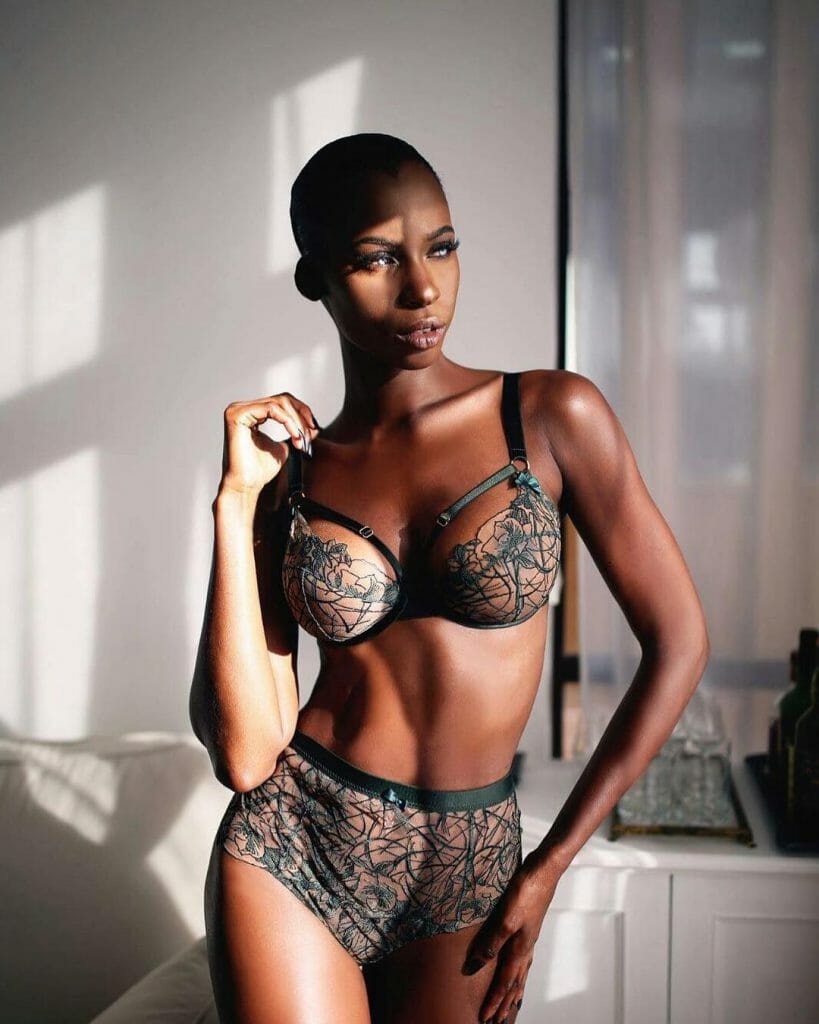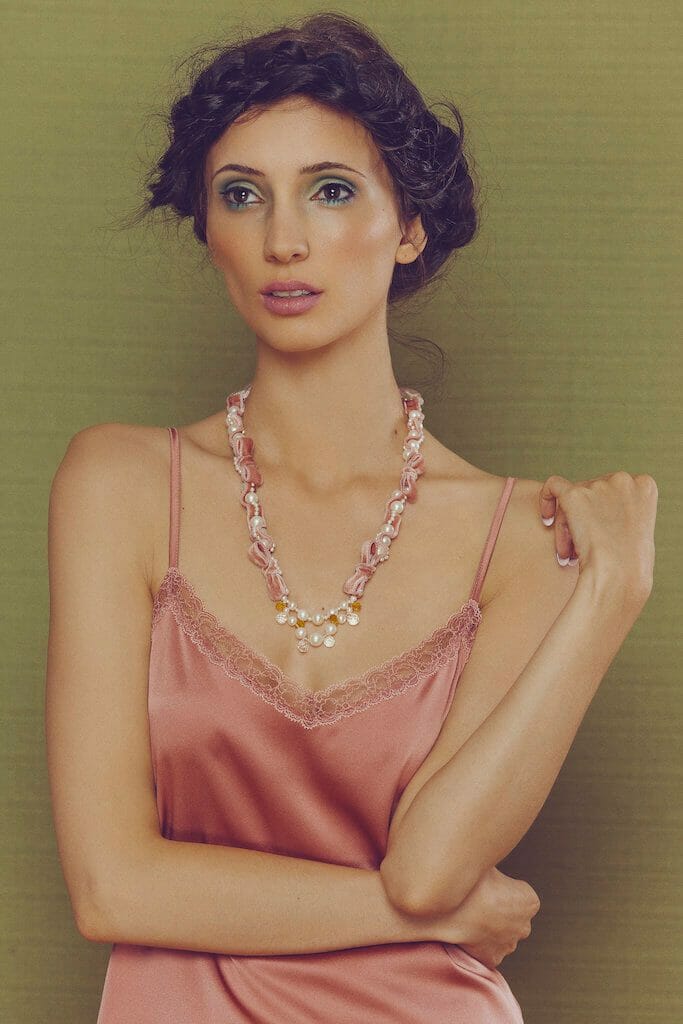Today’s guest post is by Holly, a pinup and alternative model based in Toronto, Canada. She is also a lingerie lover and vintage collector. When not modelling, Holly is working on her undergraduate degree in cinema and media studies with a special interest in Hollywood costuming from the 1930s-1960s. She also enjoys snuggling her cats, drinking large amounts of coffee and watching movies.
The pearl thong is a notorious piece of lingerie. Designed primarily for stimulation, rather than comfort or style, it seemingly represents the more sex-focused side of the lingerie industry. People (always men, in my experience) would call the lingerie store I used to work at asking if we carried pearl thongs. They’re mostly marketed as gifts, rather than something a lingerie-wearer would purchase for themselves. In my opinion, it’s the epitome of the male gaze in lingerie: overtly sexual marketing and designed entirely for sexual purposes – without the wearer’s comfort in mind.
A couple of years ago, I wrote an article on black-owned lingerie brands and it became one of TLA’s most popular articles to-date. Despite what many business experts or industry authorities have to say about the importance of “neutral” or “colorblind” companies, it turns out many people want to support underrepresented or marginalized designers. This is especially when these brands respond to a need the larger intimate apparel industry has neglected for decades.
Few things are as mysterious as luxury lingerie. In a retail landscape obsessed with 5 for $20 panties and 2 for $30 bras, it can seem strange when a company goes in the complete opposite direction, prioritizing high quality materials, fair labor, and impeccable fit over low prices.
We’re well into the luxury category now. The $250 to $499 price range is where you see unique (often exclusive or in-house designed) prints, laces, and embroideries as well as extremely fine grades of silk and tulle.
